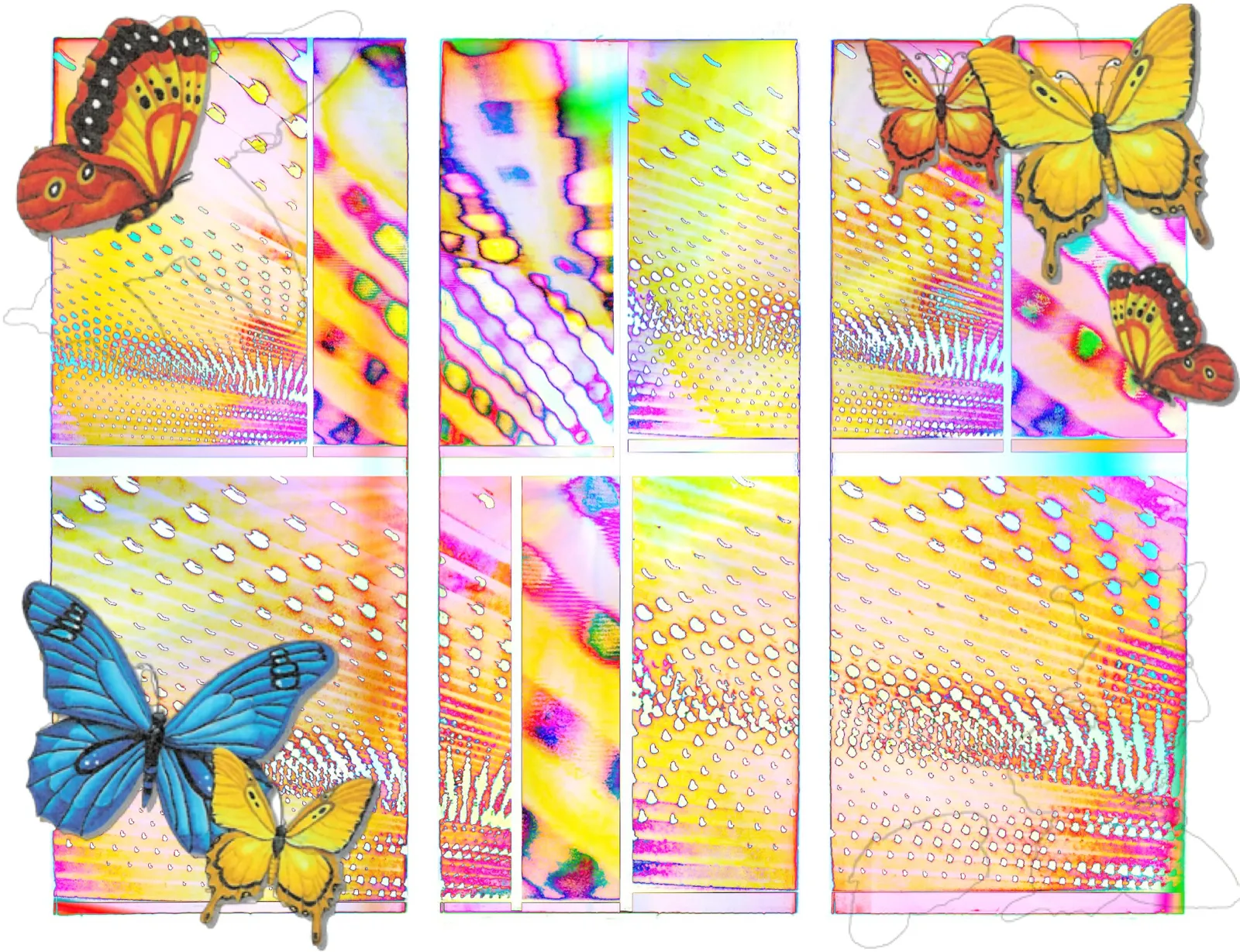The “Me” Decade

At first glance, The “Me” Decade is an explosion of color and pattern, an intricate dance between organic and digital elements. The fragmented, kaleidoscopic imagery—composed of pixelated textures and halftone patterns—hints at the synthetic nature of the visual field, perhaps referencing mass media, consumerism, and the hyperreality of the late 20th century. The title, borrowed from Tom Wolfe’s 1976 essay about the rise of self-centered individualism in the 1970s, adds a layer of sociopolitical critique to the piece.
The butterflies, rendered in a traditional illustrative style, contrast sharply with the background, evoking notions of transformation and fleeting beauty. Their placement, almost as if they are attempting to escape or interact with the structured panels, suggests a tension between nature and artificiality, freedom and confinement. This duality could be interpreted as a commentary on how personal identity was reshaped during the “Me” Decade—a time when self-actualization, therapy culture, and the pursuit of individual pleasure took precedence over collective action.
Visually, the composition mimics the structure of a stained-glass window, reinforcing the idea of self-worship or a secular shrine to personal expression. The vibrant, almost hallucinatory hues push the piece toward a psychedelic aesthetic, reminiscent of both the lingering countercultural movements of the ’60s and the synthetic excess of the ’80s. The repetition of dot-like forms and the distortion of space might reference the rise of television and mass media’s role in shaping self-perception, aligning with the notion that the decade was defined by media saturation and self-mythologizing.
Ultimately, The “Me” Decade is both nostalgic and critical, celebrating the era’s vibrancy while questioning its underlying ethos. It invites the viewer to reflect on the legacy of that time—how the pursuit of self-interest has shaped modern culture, and whether the same forces of image obsession and self-absorption still define our era.
Essay written: May 2025